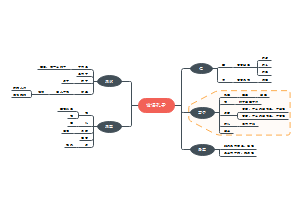导图社区 53:神经系统与眼睛
- 106
- 2
- 0
- 举报
53:神经系统与眼睛
这是一篇关于53:神经系统与眼睛的思维导图,具体细分了相关知识点,欢迎大家观看,可以参考学习!
编辑于2021-12-06 15:10:40- 相似推荐
- 大纲
53: Coordination and response
Nervous System
Homeostasis
These automatic control systems may involve nervous responses (nervous system) or chemical responses (endocrine system)
Homeostasis maintains optimal conditions for enzyme action throughout the body, as well as all cell functions. In human body, this include the control of:
Blood Glucose concentration
Water Levels
Body Temperature
Nervous System
the central nervous system (CNS) – the brain and spinal cord
the peripheral nervous system – nerve cells that carry information to or from the CNS
Structure
The conditions inside our body must be carefully controlled if the body is to function effectively. The conditions are controlled in two ways with chemical and nervous responses.
All control system include:
Recpetors (cells)
Coordination center
Brain
Spinal cord
Effectors
Restore optimu levels
Include: muscles and glands
Nerve Cells
Nerve cells are called neurones.
They are adapted to carry electrical impulses from one place to another.
A bundle of neurones is called a nerve.
Neurones transmit signals in the form of electrical impulses
Three Main Types of Neurons
motor
relay (interneuron)
sensory
Features they have in common
A long fibre (axon) which is insulated by a fatty (myelin) sheath. They are long so they can carry messages up and down the body.
Tiny branches (dendrons) which branch further as dendrites at each end. These receive incoming impulses from other neurones.
Some nerve fibres of active animals like mammals are wrapped in a layer of fat and protein (myelin), which has gaps every now and then
Where two neurones meet there is a small gap called synapse.Here the electrical signal must be converted into a chemical one, which is converted back to an electrical one on the other side of the synapse where the next neurone starts
Receptors / Effectors
Receptors cells
Receptor cells detect a change in the environment (a stimulus) and start electrical signals along neurons. These move towards the central nervous system (CNS). The CNS is the brain and spinal cord. It coordinates the responses. Messages are then sent back along different neurones to muscles which contract or relax, and glands which secrete hormones
Effctor cells
Muscles and glands are called effectors
Produce a specific response to a detected stimulus
a muscle contracting to move an arm
muscle squeezing saliva from the salivary gland
a gland releasing a hormone into the blood
Reflex Arc
There are different types of neurones that work together in a reflex action.
This is an automatic and rapid response to a stimulus, which minimises any damage to the body from potentially harmful conditions, such as touching something sharp or hot
All reflex actions follow an overall sequence through the nervous system which is called the reflex arc.
Crucially this does not involve the conscious part of the brain, which makes it much quicker.This in turn reduces damage to the body
DETAIL:
1. A receptor in the skin detects a stimulus (the change in temperature).
2. Sensory neurones send electrical impulses to relay neurones, which are located in the spinal cord. They connect sensory neurones to motor neurones
3. Motor neurones send electrical impulses to an effector
4. The effector produces a response (muscle contracts to move hand away).
Eyes
Structure
Cornea
Clear area of the sclera, it refracts light – bends it as it enters the eye.
Iris
Muscles which alter the size of the pupil, controlling the amount of light entering the eye
Lens
Focuses light onto the retina
Retina
Contains the light receptor cells. There are two main types of light receptors
Rods
Rods are more sensitive to light than cones so they are useful for seeing in dim light
Cones
There are three different types of cone cells which produce colour vision
Optic nerve
Carries impulses between the retina and the brain
Sclera
White, tough outer coat.
Choroid
Pigmented middle layer with many blood vessels. It absorbs light to avoid reflection and nourishes the retina.
Blind spot
Where the optic nerve leaves the retina so lacks receptor cells
Pupil
Small window at the centre of the iris through which light enters the eye
Pupil Reflex
The amount of light entering the eye is controlled by a reflex action. The size of the pupil changes in response to birght or dim light. This is controlled by the muscles of the iris
Images
How It Works
Accommodation (S) is the process of changing the shape of the lens to focus on near or distant objects. This is another reflex action, so happens automatically. To focus on a near object – the lens becomes thicker, this allows the light rays to refract (bend) more strongly. To focus on a distant object – the lens is pulled thin, this allows the light rays to refract slightly









